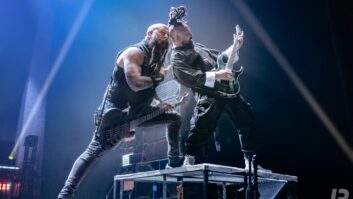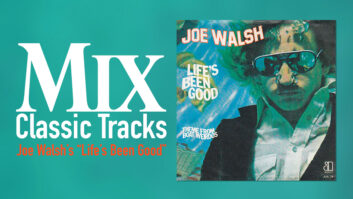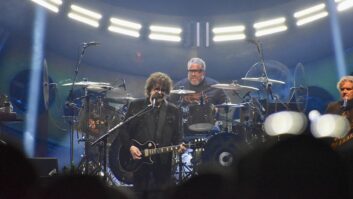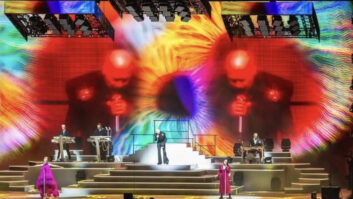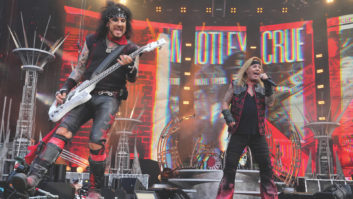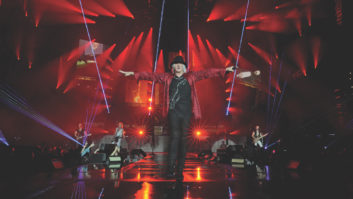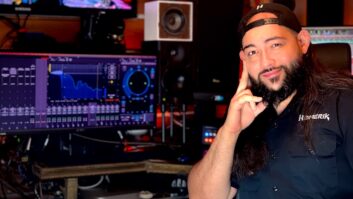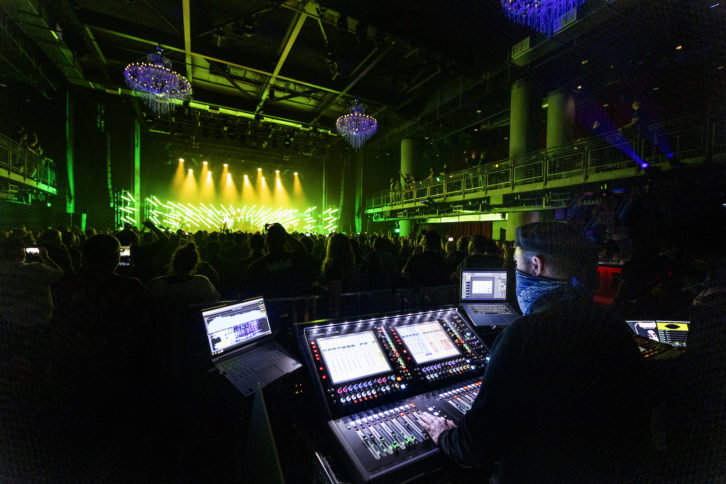
In the 20 years since it was formed, Swedish death metal band Avatar has built a fervid fanbase around the world that has only grown with the release of each new album. Currently touring behind 2020’s Hunter Gatherer, Avatar hit the U.S. in September and October for a seven-week jaunt full of festival appearances and 2,000-capacity rooms, each packed with fans anxious to see the group’s latest theatrical show.
Along for the ride was Erik Rogers, doubling up as both FOH engineer and tour manager. “My preference is mixing front-of-house only, but coming back from this pandemic, if somebody offers you work and you turn it down, you’re foolish,” he said. “I’m glad to work, and tour managing isn’t that difficult—I’m meticulous about record keeping and I like yelling at people.”
All jokes aside, as the tour manager, Rogers had to deal with keeping his artists and crew safe while on the road—a task sometimes easier said than done. “If you think about it, the most dangerous positions on a tour are Front of House, lighting director, a photographer and a merch person, because they go out into the audience. For instance, I always have my front of house with a good eight feet between me and the barricade, so it’s like my little island—I love it. Then the other day, some guy leaned in, he didn’t have a mask on and he started yelling to me. I couldn’t hear him because of all the noise, so I signaled ‘I’m sorry, can’t hear you’—and he let himself into front of house! I’m like, ‘Dude, get out!’ He said, ‘Oh, it’s okay; I’m vaccinated.” I don’t care; it’s not okay—it’s just not. I’m usually pretty welcoming and I like to hang out with people, but honestly, I’m looking at the whole audience like I’m the only guy in The Walking Dead who’s not a zombie.”
Clair Global Acquires ATK Audiotek
Throughout the run, Rogers mixed on a control package provided by Clair Global (Lititz, Pa.) that centered around his console of choice, a DiGiCo SD12-96. Giving the mix a little extra warmth and presence, all subgroups were sent out of the DiGiCo SD Mini Rack at FOH into a Neve 5059 Satellite Summing Mixer, where drums, bass, guitars and tracks were summed to Stereo A and returned into the SD12 in a “Band” group, while main vocals, background vocals and vocal effects were summed to Stereo B and returned into the SD12 in a “Vocal” group. “I put a little Silk Red on the vocal and a little Silk Blue on the band…that’s about it,” he said.
The FOH position was also equipped with a Waves server that was put to good use. Waves plug-ins used on the show included the API 2500 compressor on parallel drum groups; a F6 floating-band dynamic EQ on group buses and main mix; Waves Primary Source Expander, C6 multiband compressor and API 2500 on vocal mics; and the CLA-3A compressor/limiter on bass guitar. Diving deeper into vocals, they were also treated with a H-Reverb for reverb; Abbey Road Reel ADT for vocal doubling; and H-Delay for vocal delay effects.
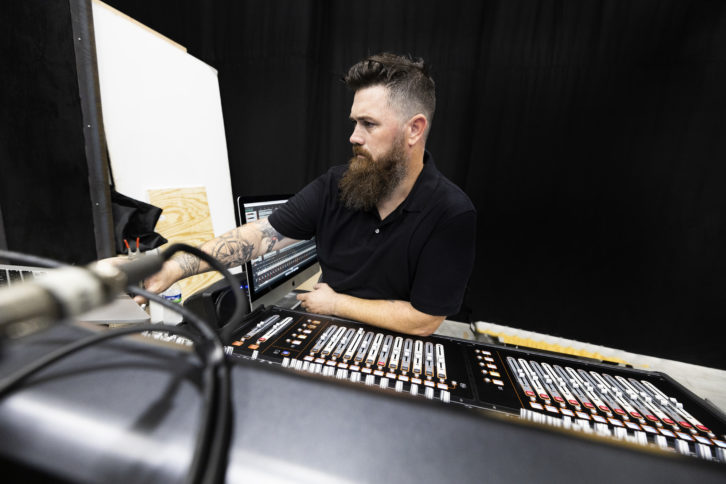
“This band is very active in managing their show,” said Rogers. “Every day, when I do a virtual playback for my own tuning purposes, all five of them will come out and listen intently to what’s going on. They want to make sure that the show’s being presented exactly how they want—in some ways, they want it to be just like the record, but louder. A record, of course, is very sterile and there’s some cool live stuff that happens, so I have a lot of flexibility in that, but it needs to stay true to the record as much as possible.”
That “cool live stuff” happened right from the start, as the band opened the show huddled together mid-stage in a near V-shaped formation with drums played for the early songs on a standing kit of kick, snare, toms and cymbals.
“It’s not a jazz quintet playing downstage,” he chuckled. “Everybody’s full roar, and it’s a big challenge to ensure the drums don’t bleed too much into everything else. The second song, they break free—the background vocal mics go away and the singer starts moving around the stage, so the show evolves and develops. After the third song, we go to the primary kit and it’s a full-on rock show from there. Halfway through the show is ‘Going Hunting,’ which is the new single, and that’s when it gets pretty intense: The backing tracks come into play and we’re looking to re-create that record vibe, but also do it theatrically. There’s dramatic intros, heavy verse, heavy sound in the chorus, and the bridge is melodic—and keeping all that under control is a pressure situation.”
Hella Mega Yeah! Behind the Audio of the Summer’s Biggest Tour
Keeping track of Avatar at stageside was engineer Jonathan Winkler, tackling the band’s monitors on a DiGiCo SD9 and sending those mixes to the group’s Ultimate Ears IEMs. Across the stage, the band was captured almost exclusively with Audio-Technica mics, with an AE5400 RF on the main vocal, wired AE6100s for background vocals, Radial JDIs, and guitars coming out of Kemper amps. While the standing drum kit was captured mostly with ATM250s and 350s plus an Audix D6 and Shure Beta91a in the kick, the primary kit was outfitted with four AT2500s on the double kick drums; ATM650s and 450s on the snares; 350s on toms; 450s on cymbals; and AT4050s on overheads.
At the other end of the signal path, Avatar used local P.A. at each stop, so Avatar was variously heard through systems from L-Acoustics, Meyer Sound, d&b audiotechnik, EAW, Bose, Sound Bridge and more—which was fine with Rogers: “It’s my job to make it sound good through any system there is. I carry my Smaart rig and a Lake LM 44, so I don’t even get into the house processor; I just ask them to leave it flat and not touch it. Every day, I meet the local audio tech, we exchange names and then they spend the rest of the day in their chair, enjoying an easy day. I don’t like the drama; we just like to come in and do a good show. If something’s routed wrong or there’s a box not functioning properly, then of course I ask for help, but for me to play pink noise, measure a P.A. system, slide some EQs and change the delay times? It’s not that big of a deal.”
The end result each night was a show that met the high expectations of both the band and the crowds, allowing all involved to forget the pandemic for a while and instead dive into a maelstrom of metal. “The show is almost two hours long,” said Rogers, “and every night, the fans are so ready for it. These kids haven’t seen a show in a year and a half, so it’s the best two hours they’ve had in 18 months!”
Swedish death metal faves Avatar hit the U.S. for seven weeks this fall, tearing through 2,000-cap rooms and festivals along the way.
